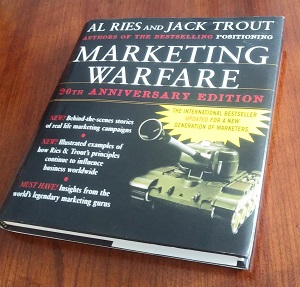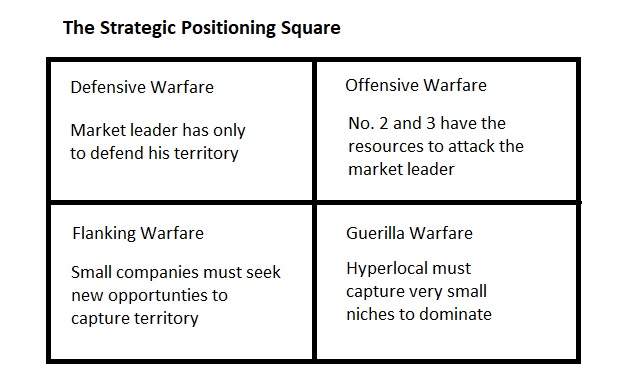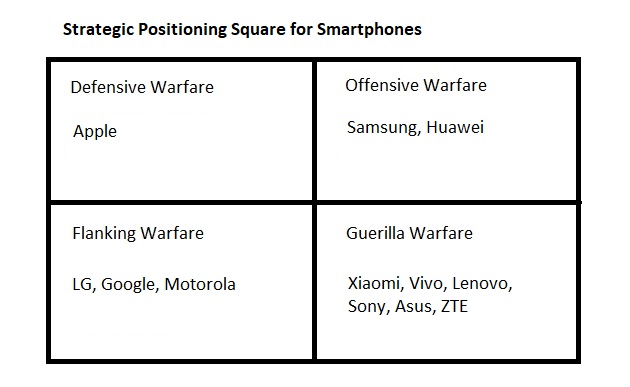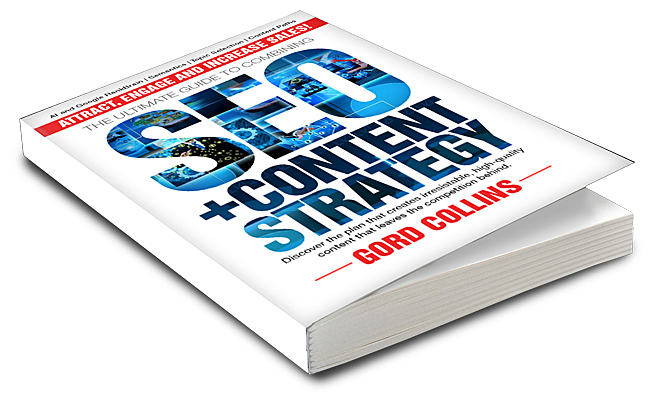Winning Military Strategies to Capture Markets
It’s in the real life and death battlefield where armies and Generals such as Sun Tzu discovered which strategies actually win. The lessons of failure are harsh as second chances are rare. It’s the same in business when we lose the investor’s money and our customers. Confidence evaporates.
The lessons from military strategy are essential for modern digital marketers and now we can this joy of battle strategy too.
Strategic Competitiveness on the Battlefield
In the past, we all ignored battle concepts, yet experience tells us they do work. For instance, haven’t we all suffered losses when we didn’t compete well? Some businesses survive a recession, tech change, or strategic competitor moves. Some don’t. Strategy is always behind success. Whether you’re a content strategist, SEO strategist, or brand strategist, these military marketing principles below are essential to understand. There’s a lot to know, so let’s dive in.
The material below is a sequence of issues/needs that if mastered can turn you into a marketing warrior. If you have a response for anything the market throws at you, then, aren’t you invincible?
Warfare Strategy Table of Contents:
- The Focus: Your Competitor’s Weakness
- Don’t Be Your Own Worst Enemy
- Let’s Get This Done as Fast as Possible
- Learning the Art of War
- The Real Payoff: Mastery and Repeatable Victory
- You Don’t Satisfy Customers, You Beat Competitors
- What is the Battlefield?
- What are the Battlefield Goals?
- Maneuvering and Warfighting
- What Are Your Battle Weapons?
- Which Weapons and Battle Tactics to Use?
- The Battle Plan
- Basic Principles of Warfare
- Principles of Defensive Warfare Strategies
- Principles of Offensive Strategy
- Final Thoughts
The Focus: Your Competitor’s Weakness
As you’ll read in this post, the experts say that what you’re doing now focusing on serving customers, will likely fail as competitors take the higher road to victory. Instead, you create sales by beating competitors offers. Instead of head to head battles with the market leader, you find weaknesses that will make your product/service compare better. Perception counts in battles.
You’re not invading their territory really. They’re in your territory, so defend it with passion. Tax them, take their weapons, use up their resources, persuade the market, and dominate the best ground.
The discussion here might sounds too aggressive and violent, but it’s all just positioning. You’re not really attacking anyone personally or making threats. Each act just pushes you deeper into the mind of your target customer to win more business, more revenue and make a better life for yourself.
Don’t Be Your Own Worst Enemy
Tough Love talk: Your real enemy or weakness might be your own beliefs and attitude. As Sun Tzu stated, the enemy himself provides the means to defeat him. Are you your own worst enemy? Do you defeat yourself with excuses and unwillingness to claim what is rightfully yours? Attitude is crucial. Feel good. You deserve success just as much as they do. They don’t own anything. You should create your own spot at the table, without invitation. This is your rightful place, as a market leader.
Your motivation drives all success.
Let’s Get This Done as Fast as Possible
 The battle timeline is accelerated by excellent, well executed strategy. Victory can be very swift. The timeline is whatever length you want it to be. Win fast, and you save your time and resources. Be the warrior no one wants to confront so they will lose their will to compete harder.
The battle timeline is accelerated by excellent, well executed strategy. Victory can be very swift. The timeline is whatever length you want it to be. Win fast, and you save your time and resources. Be the warrior no one wants to confront so they will lose their will to compete harder.
Necessity is the mother of invention. Competition and losing makes it so. No one likes a loser. After using some techniques, we dug in deeper to learn battle strategies — the bottom up process that leads to the winning strategy.
This is why we study the tactics, battles, and techniques, because they lead upstream to the winning strategy.
Besides helping marketers plan a path to victory, it also makes us smarter as marketing strategists. Generals succeeded more after winning and as they became more confident. That’s the point perhaps is that confidence breeds clarity and focus.
Learning the Art of War
In our college marketing classes long ago, the War strategies of Sun Tzu were popular teachings as were the concepts of Al Ries and Jack Trout. And yes, they presented some essential lessons in strategy that we’ll explore more deeply in this post. Our goal is to plan and execute better for greater effectiveness in advertising, content marketing, SEO strategy, and generating sales leads.
And better execution, more weapons, better soldiers, and more money is a winning approach whether you’re designing content or building backlinks. In essence, you must do it better than competitors.
We’ve always thought that wise marketers don’t do battle. They don’t compete. They position to avoid competition. So how could a battlefield concept possibly apply here? It turns it out that even when we position ourselves uniquely to make competition irrelevant, we’re still competing for a spot. That spot is a geography in the customer’s minds (the products/brands, values, stores, media). Even if we completely capture loyal customers, competitors will try to erode our strengths and knock us from our pedestal.
The Real Payoff: Mastery and Repeatable Victory
Military concepts might take us from wishy washy dreamers to conquering rulers. Clarity, confidence, and effectiveness might be surprising benefits from this study. All marketing managers must have these very skills in abundance. Applied military strategies or not, the knowledge of them to get us focused and powered up is the real takeaway here.
Few have thought to apply military strategies to SEO or content marketing but we’ll explore that in a separate post. Anywhere there’s a competitive battle, military marketing strategies can pay off. A full applied strategy would fill a book, but let’s try to simplify the topic so we at least comprehend what it can do for us this year.
You Don’t Satisfy Customers, You Beat Competitors

Marketing gurus Al Rise and Jack Trout pointed out so expertly in their groundbreaking book “Marketing Warfare” that this is the era of competition. Knowing the consumer deeply doesn’t guarantee the sale.
We must still beat our competitors who may have better inroads to that customer. The customer is loyalty to them even though their value proposition is weak. Their weakness is our opening.
“The key to marketing warfare is to tailor your tactics to your competition and not to your own company”
Ries and Trout meant that it’s competitor’s weaknesses that give us access to the market, because they dominate the market and they’re perceived to have the product/service desired. We must take marketshare from them. The first lesson is that we must know ourselves (our UVP and strengths) and our competitor’s strengths and weaknesses too. As Sun Tzu believed, success is in that knowledge. We can only do what we can do.
What you sell right now isn’t critical, just that you can beat your competition and appear to be best.
What is the Battlefield?
The battlefield is the customer’s mind. Yet, the battlefield is now segmented. A win in one doesn’t win the other segments. Customers are smart and know they can buy modules, specialists, and the best customized solutions.
Our content assets are our weapons. The media channels are roadways, bunkers, air space, waterways, railway lines and how we gain access to the customer’s mind.
Our tactics and techniques are our positioning and communication. It’s how we communicate our messages and respond to competitors, along with our moves to close the deal with customer sales.
And the battle is how we reach customers. It occurs when they shop to compare products and services available and buy. If we don’t reach them and communicate our superiority, we will lose the war and the market.
What are the Battlefield Goals?
The market and customers are like a city being attacked by many different and opposing armies. We must dominate access, position our weapons perfectly, deliver decisive information blows, in a focused and coordinated way. Force comes through focus and timing.
The goals are to create digital assets such as blogs, marketing pages, videos, ads, and graphic features that dominate, excite and fascinate customers. These take attention away from competitors and weaken their message and contact with the customer.
We also create our content with strategic use of well-chosen keywords and speak in the voice of approving search engine robots. We weave a storyline of value and focus our ranking power to win high Google rankings.
Battles are just events designed to skew the customer’s understanding and preferences to favor our company/brand/offer. The battles are opportunities to win against them on each value point. Every benefit and feature, and every point of relevance and credibility are the bombs and bullets that hit home in the customer’s minds. And our success can also discourage and demoralize our competitors and cause them to give up.
Maneuvering and Warfighting
Further military strategies are called maneuver warfare or warfighting. This happens after the initial campaign launch where competitors counter with tactical UVP/feature defenses and maneuvering of benefit positioning.
This might mean altering their value proposition, adding services, rewriting marketing pages, advertising with new ads to shore up exposed weaknesses, and blogs and email campaigns to make new claims. Just by mentioning them to customers, they might be accepted as true. Yet, competitors can step in and counter those new claims. False claims and unsubstantiated benefits can lessen credibility.
One company for instance, can counter directly by actively comparing their prices and results to their competitors. The competitor (e.g., market leader) will likely not want to leave their defensive position to respond publicly. By not responding, the market leader may take a brand loss and allow the competitor to keep pounding away at the exposed weakness.
This is how infighting can work well, in picking a fight that the unwilling competitor must respond to. In responding, the truth may come out about their value proposition and their true service skill. Any response during a battle could end up in greater losses.
One key tactic is to strike the competitor’s command center in a flanking attack and render the opponent unable to fight. The leader might be called out specifically to respond to a complaint or slight of value (e.g., the old Better Business Bureau complaint). The leader’s responses would be made public. If he doesn’t respond at all, he takes a verbal lashing on social media, giving credence to the competitor’s claim.
When leaders reputations get damaged, or the company’s media communications are trashed and their clients get pulled into it, they may suffer disintegration (lost customers).
It’s one thing to have good warfighting tactics if you desire to take it that far. It’s another to be able to execute any plan that cripples a competitor that badly. Slimy business owners often do this tactlessly and leave themselves open to legal and reputation losses that could send them spiraling downward like a plane shot out of the sky.
Beware those with limited intelligence and strategic skills taking on market leaders. Tactical battles with weak competitors shows very bad judgement. What starts out as easy pickings becomes a nightmare. Some sophisticated companies might even start something to lure an unwary competitor they don’t like into the open battlefield.
The command center would be designing communications to indirectly attacking the skills, experience, and value of the competitors leadership team. Company’s often do this by boasting about their managers experience, job titles, education, credentials, community standing etc. to make other company’s leaders look pale in comparison.
Warfighting does happen, but it’s usually at a low level because taking it further can reflect badly on those who disparage directly, or boast too much.
The sensible aim for warfare strategy is to use the enemy’s strengths and weaknesses against their will, design them into your product UVP and promote them in media channels, to build your invincibility. Anytime you battle directly and openly with competitors, it will reduce your brand equity. It’s better to battle invisibly and use the least resources to achieve victory.
What Are Your Battle Weapons?
You could describe your money, cannons, aircraft, rifles, soldiers, loud speaker, ammunition, jeeps, and captured ground as war assets. War is expensive as you must expend resources to capture the battlefield. Today your marketing weapons are:
- an attractive website to showcase and focus your relevant unique value proposition
- your relevant, personalized unique value proposition
- your engaging content (blogs, graphics, video, downloadables) that gets people to like it, share it and promote it
- your search engine presence, Google ads, Facebook ads and sponsorships online that give you omnipresence with your audience
- your power of persuasion and skill at strategy
- the specific creative and production abilities of your staff
- your industry research and competitive market knowledge
- your power to negotiate and incentivize to close deals
- live sales events and testimonials that provide proof of your superiority
- your funds and ppc campaign to target the customer prospect exactly and immediately
Which Weapons and Battle Tactics to Use?
Ries and Trout point out 4 types of armies and a corresponding warfare for each as depicted in this graphic:

In the first quadrant is the market leader, who only have to defend their position. The second quadrant is the number 2 to 3 companies who must wage an offensive attack on the leader. The next quadrant is smaller companies who should use a flanking attack to gain new ground and then persistent keep it. The final quadrant is for local companies who could use guerilla tactics to find anything they might win.

The Battle Plan
Currently almost no one completes a digital marketing audit, complete with competitor analysis.
“In the marketing plan of the future, many more pages will be dedicated to the competition. This plan will carefully dissect each participant in the marketplace. It will develop a list of competitive weaknesses and strengths as well as a plan of action to either exploit or defend against them.” from the book Marketing Warfare; by Ries and Trout.
Plans are for bankers and strategies are for winners? Yet a strategy plan or map gives us direction and gets us prepared to position our unique value proposition precisely. And we present it precisely with lethal force to tilt the battlefield to our advantage and beat competitor’s claims to superiority.
How Marketing and Military Strategy Agree
1. a defined goal to capture
2. a purpose that integrates and synchronizes all we do
3. tactical positioning to win battles
The underpinning of any successful battle requires strategies and tactics, techniques and procedures -a plan of action and milestones with measurable goals.
Basic Principles of Warfare
1. Use force to win your positioning. Force is the capacity to win battles. Most principles of force cite bigger bombs, more soldiers, and more resources. They are vital because they use basic math to help the larger beat the smaller. Better staff, better products, positive thinking, and smarter managers won’t generate results. Only strategy excellence will keep your company alive and relevant.
2. Use an aggressive attack strategy. Keep competitors off balance, adding surprise blitz marketing attacks, continuous innovation, and multiple channels to prey on your opponent’s weaknesses.
3. Realistically accept customer’s perception of your company/brand. Leverage its potential to win more battles.
4. Develop allies. Collaborate with those who have the assets/personnel you need to become a bigger threat. Align with the best, especially those who understand and respect strategy. The others are temporary and will perish in battle.
5. Establish a powerful defense. A great defense hides you from enemy attack minimizing their ability to score wins. Brands that have built good defenses are still around today.
6. Always be strategic. Be patient, collect intelligence on competitors, and plan your battles so each one supports the next.
Principles of Defensive Warfare Strategies
A good defense beats all which is why this one is so important. From your digital marketing audit or SEO audit, choose features/benefits that are impervious to assault. Do not give up your hard fought position and thus expose new weaknesses and vulnerabilities. Remember when Coca Cola dropped the old Coke drink that lead the world for 80 years, and went with new tasting Coke? It weakened their brand and gave Pepsi a big opportunity.
Be critical of your strengths and practice attacking yourself to see how your defenses stack up, to find ways to evolve and improve. The market will keep telling you where your weaknesses are.
Try to block your competitor’s big moves. Predict where they’re headed and blow up the bridges ahead of them and make sure they can’t retreat to their old position.
Principles of Offensive Strategy
Turn the battlefield against them (e.g., cite Google basic SEO guidelines and best practices to erode customers respect for Advanced SEO) and use misdirection/distractions to keep customer’s awareness away from competitors (add on services, staff events, industry news, regulations).
Don’t attack the leader’s strength if you have no way to actually reach it and inflict damage. Any comparison with the leader can damage your brand. Instead find a weakness in the leader’s strengths you can attack. However, their weakness is the inverse of their strengths, so in essence, you are attacking their strengths. Big companies for instance are bloated with high costs, slow response, bureaucracy, impersonal, and lack of flexibility and industry expertise. Paint them only with that brush and recreate their brand without their permission. Perception is everything, and they may not have the skill or courage to defend it.
Launch your attack narrowly for greater force, focusing on key weaknesses, and hammer away with blitz marketing that is sure to get attention. You only need to deliver your message grenade once.
Be confident, that your opponent likely isn’t as fierce, talented, and determined as you are. Confidence and action speak loudly. If resources are what you lack to launch your attack, let them know you will acquire money, weapons and ammunition and return to the battlefield fresh and ready for extended warfare.
Play on their vanity and pride to draw them out of their bunker, encourage them to be a hero, when they have to defend the weakness you’re attacking. Speak directly to their audience via social media and Google/Bing and expose their defense tactics to their audience. Win allies, and teach them how to attack the market leader too with precision. It’s distracting for them and uses up their marketing resources.
Launch a Flanking Attack. Flanking means creating or finding a new uncontested segment (or battlefield), where you can win. For instance, using Instagram or Tiktok channels could give you control of a new demographic or tech wave. Big competitors can’t adjust easily. If you tilt or change the battlefield, it leaves them vulnerable exposing their heavily laden high paid army to attack. They depend on organization, but with change that could disintegrate. Some employees may leave and some clients too.
Flank with deftness and small size. If your product is too small and nichy, they won’t bother to, or can’t respond. One indispensible feature of your product or service can make it a must have for customers.
Flank with better and bigger distribution (social media, search engine optimization, content marketing), and use direct communications with their audience.
Flank with lower cost, because big competitors change huge fees and prices. Expense is a key customer pain, and since your offering is more precise, you deliver core benefits without the big cost.
Flank on Technology waves (AI) for instance can allow you take catch competitors off guard unready to defend something they don’t even own. And by pretending, they leave themselves vulnerable to big losses. Notify their customers subtlely that they don’t have the benefits promised in that segment, thus making their legitimate entry into it embarrassing and non-credible. Now they’re a laggard or a follower.
Once you land direct hits, you keep the pursuit up causing further damage and pushing them out of the territory. Let them know they can gain relief by vacating the battlefield, thus encouraging them to give up and surrender (e.g., consider the incremental improvements of some toothpaste brands as they added mouthwash, whiteners, and gum disease fighting benefits to keep the pressure on other toothpaste brands. Successive hits that help them take market share away from Crest/Proctor and Gamble).
Never lower your price as an offensive strategy. It projects weakness in your value proposition. You don’t want to capture the worst of the market, only the best and you’re going to take their customers through a strategic presentation of value against their weaknesses. Raising your price may work when it suggests premium quality combined with superior unique benefits. Top quality prospects don’t quibble on price, they focus on the relevance and excellence of your unique value proposition.
Counter attack. After attacking they are visible and vulnerable, away from their bunker. Counter with your superiority on each feature and benefit. Goad them into the open where you’re ready to launch a blitz attack for big damage.
Guerrilla Offensive Strategy. Guerilla tactics are aggressive attacks directly on any competitor, big or small, to capture a small position you’re capable of defending. After defeating the leader, do not become the leader. You can’t become the thing you just destroyed. Stay lean and mean and ready for battle in segments and niches. Competitors will feel doom about your persistence. Focus on a specific city, state, or country, smaller the better.
Be the big fish in the small pond. If there is a big fish in the pond, dry up that pond and force them out into the ocean where they likely can’t compete.
To respond, big competitors will change their service/product mix and features, thus creating opportunities for you to appear superior (perceptions). Look for gaps, weaknesses, and inefficiencies and attack them. Prove your mastery of specific technologies, skills, and industry specific knowledge. Expertise is a deadly weapon. The rarity and depth of your expertise is impossible to attack and defend against. Communicate it with precision.
Develop allies with small companies/specialists where your collective product is perceived to be more appropriate and cost effective. When your competitor points to power and integration, point out their costs and waste, conflict of interests, excessive compensation, lack of expertise, and poor understanding of customers real needs.
Be patient and avoid reacting to competitor’s attacks, thus communicating your position and weaknesses. Analyze their attacks (as an expression of what they see as your weaknesses and their own weaknesses). Your competitors will tell you how to beat them. Don’t waste your ammunition, and attack to be lethal. In the end, you will win the war because of clarity and consistent application of battle strategy. Never let up.
Final Thoughts on Marketing Warfare Strategy
The real challenge for you now is to conduct a digital marketing audit. Understanding competitor weakness and market gaps, you’re ready to re-evaluate and adjust your unique value proposition. It is now that your high quality UVP will help you conquer your market.
I’ve deliberately left out some key points and pitfalls. It’s in the sophisticated practice of battle strategy where battles and the war are done. When you hire me as your SEO Strategist/Content Strategist, you’ll get this painstaking and relentless process working for you, building a highly visible force in your content.

Advanced SEO | Advanced SEO Tips, Techniques Strategy | Blitz Marketing Campaigns | Strategy for Google Rankings | Advanced Keyword Strategy | SEO Company | SEO Services | Digital Marketing Company 12 Step SEO Strategy | SEO Software | Best SEO Company | Backlinks Building Company | Outreach | Make SEO Top Priority | SEO Audit | Google Algorithm Updates | Backlink Outreach | Advanced SEO Consultant







